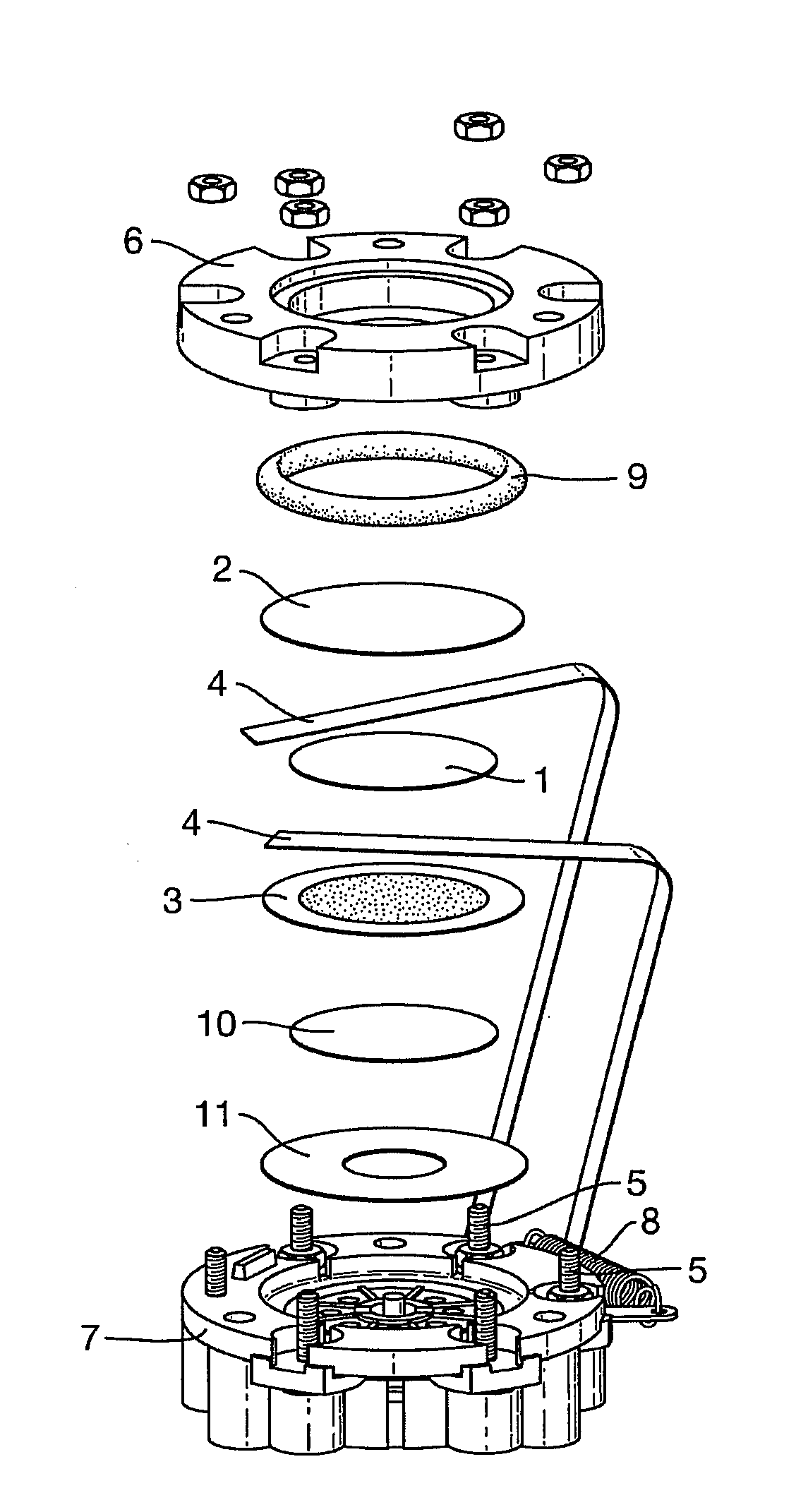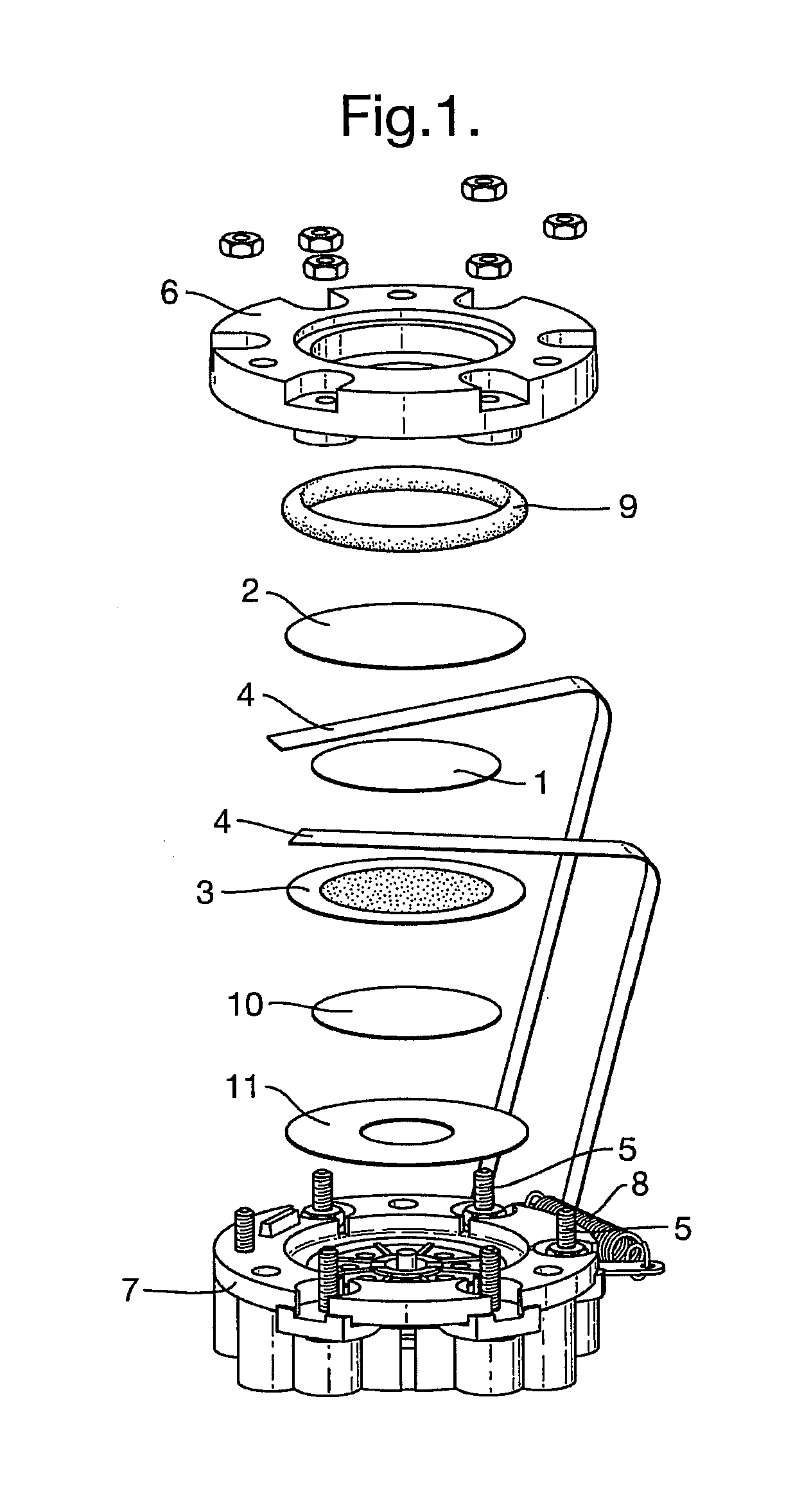Liquid electrolyte composition and its use in gas sensors
a technology of liquid electrolyte and gas sensor, which is applied in the construction details of gas analysers, liquid/fluent solid measurements, instruments, etc., can solve the problems of affecting the reliability of the sensor, limiting the range of environments in which it can be used, and disrupting the continuity of the electrolyte between the electrodes
- Summary
- Abstract
- Description
- Claims
- Application Information
AI Technical Summary
Problems solved by technology
Method used
Image
Examples
example 1
Method of Forming Electrolytes
[0066]Electrolytes were prepared by a simple additive method in which appropriate amounts of a Brønsted base and the super acid bistrifluoromethanesulfonimide (CAS No 82113-65-3) (HTFSI) were combined in the absence of solvent. Sufficient quantities to give equimolar mixtures of each were accurately weighed into separate sealable sample tubes. As a precaution against moisture contamination, the HTFSI was handled in a glove box under a dry N2 atmosphere.
[0067]The basic procedure for synthesising electrolytes involved slow addition of HTFSI to the vial containing the base compound. This process was performed in a glove box or, if practicable, under a flood of nitrogen. The neutralisation reaction, if feasible, usually commenced within a few minutes of mixing and for solids was evident in the slow formation of a “damp” solid or a liquid. If little or no reaction was evident after several minutes under ambient conditions then the mixture was gently heated w...
example 2
Evaluation of Electrolytes
[0102]Evaluation of the liquid electrolytes prepared above was performed within a modified form of the standard City Technology Ltd 3-Series CO sensor. Each 2-electrode sensor was assembled as shown in FIG. 1, with 150 μl of the electrolyte pipetted directly onto the separator (1) positioned between the sensing (2) and the counter / reference electrodes (3). Electrical contact was made via Pt ribbon current collectors (4) that were interleaved between the respective electrodes and the separator, and spot-welded to terminals (5) on the sensor housing. The gas diffusion electrodes (2, 3) were manufactured with Pt black catalysts supported on microporous PTFE Gore membrane discs (diameter 25 mm). Sensors were closed by a gasket ring (9) forming a compression seal formed by the top-plate (6) being bolted onto the sensor base (7). A further separator (10) and a PTFE floor seal (11) were positioned between the base (7) and the counter electrode (3). The top-plate (...
PUM
 Login to View More
Login to View More Abstract
Description
Claims
Application Information
 Login to View More
Login to View More - R&D
- Intellectual Property
- Life Sciences
- Materials
- Tech Scout
- Unparalleled Data Quality
- Higher Quality Content
- 60% Fewer Hallucinations
Browse by: Latest US Patents, China's latest patents, Technical Efficacy Thesaurus, Application Domain, Technology Topic, Popular Technical Reports.
© 2025 PatSnap. All rights reserved.Legal|Privacy policy|Modern Slavery Act Transparency Statement|Sitemap|About US| Contact US: help@patsnap.com


